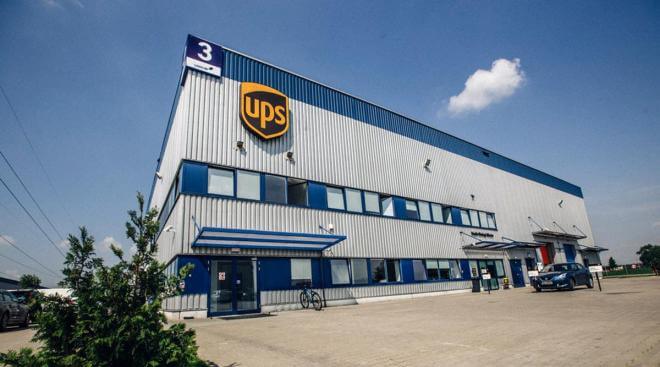UPS (United Parcel Service) Mission and Vision Statement Analysis

UPS’s mission statement is “Grow our global business by serving the logistics needs of customers, offering excellence and value in all that we do. Maintain a financially strong company with broad employee ownership-that provides a long-term competitive return to our shareowners. Inspire our people and business partners to do their best, offering opportunities for personal development and success. Lead by example as a responsible, caring, and sustainable company making a difference in the communities we serve.” UPS is categorical about what it does as shown by the elaborate nature of this statement. It is a sign of how thorough the company is when it comes to delivering services. The following main points can be extracted from this mission statement:
- Excellence and value. The customer is clearly at the center of everything about UPS. The company prioritizes the needs of its customers in various ways to satisfy this component. For instance, it guarantees timely delivery and efficient handling of all the packages. UPS has a well-connected delivery channel that keeps the customer aware of all the activities touching on their items in every step so they can plan ahead. The company makes this possible through the UPS My Choice which also offers other preferences to customers, and this adds to the excellence of the service delivery.
- Improving communities. UPS states that it is a perfect example of what a responsible and caring company should look like. Everything that it does links to some element of sustainability, a culture the company promotes to protect both the people and the environment. UPS, again and again, says that it believes in the power of more, and by this, the company means that other than its primary logistics and trading services, there is more to it. Engaging as many people as it does to drive its agenda is, first of all, an empowerment strategy in society. In addition to this, UPS is very sensitive about the sustainability of the environment, and therefore, directs significant resources to conserve it.
- Exceeding expectations. The business profile characterizing UPS shows that this is a company that sets the pace for others to follow. There is no doubt that the strategies adopted by the management do more than just meet the shipping mission. They benefit the company, the customers, the investors, and the general community. That explains why the company is highly rated as an inspiration and one that offers limitless opportunities.
Introduction
United Parcel Services or popularly known as UPS is a company whose corporate statements have shown how important it is for the management to remain strategically balanced for success. UPS mission and vision statements show that this is a company that has got everything figured out.
In fact, the long track record of success proves how well equipped this company has been since 1907 when it was founded by James E. Casey. Frankly, few companies can survive this long, let alone grow and expand to have several subsidiaries as UPS has done without a clear vision and mission to ride on.
Scholars state that a vision statement is an official expression of a future that the company wants to be known for. It gives the growth direction. In this case, the UPS vision statement agrees with this definition especially in how it seeks to be a role model for other shipping and logistics companies. Its focus is on creating the best practices for everyone in the sector.
The success of this vision depends on the mission statement. Based on the definition of scholars, a mission statement outlines the actions the company implements to get to its vision. UPS clearly highlights all the areas that it touches on while at the same time pointing out the experience that its customers should benefit from.
Its emphasis is on making a difference everywhere. One thing is clear, UPS (United Parcel Service) has a strong internal culture cultivated by its strong core values. The presence of these elements has created an image and atmosphere where the company can comply with its mission and vision statement with minimum challenges.
Vision Statement
UPS vision statement is “helping customers pioneer more sustainable solutions, delivering packages more efficiently, creating more connections around the world and finding more ways to take action and give back.” While this is not the official vision statement of UPS, it embodies everything the company is known for and what it strives to achieve and maintain. The following components are a reflection of this vision statement:
- Creating a web of connections. UPS’s primary role is to link customers with their packages, trading partners, and other development opportunities. The business has gradually matured over the years, making it a dependable entity when it comes to helping individuals and facilities get solutions to their logistic, shipping, and trading needs. In fact, company history over the years speaks for itself.
- Global Image. In relation to this factor, UPS has established itself as an ever-growing enterprise, with its influence felt in over 220 nations across the globe and serves more than 10.5 million clients. The company does not limit its influence based on geographical boundaries. Its policy is to meet the needs of its customers wherever they are and in the most efficient ways.
Core Values
UPS core values comprise “Integrity, Teamwork, Service, Quality and Efficiency, Safety, Sustainability, Innovation.” A look at the history of the company shows how impactful these values have been in how it consistently provides its services. The uniformity of UPS is outstanding across the globe.
UPS (United Parcel Service) endeavors to progressively improve the company profile by maintaining a unique practice and culture. The stability of this firm comes down to its emphasis on everyone going all out to serve and delivering these services in a right and respectful manner. In this way, the company also satisfies the value of quality, which becomes even more attractive when everyone demonstrates competency in what they do. Most of all, UPS encourages the need to constantly find better and easier tactics of getting the job done with safety for all parties in mind.
Slogan
UPS slogan is: What can Brown do for you?
The brown color that UPS (United Parcel Service) uses on its vehicles and uniforms is called Pullman brown. Company founder James E. Casey originally wanted company vehicles to use a yellow paint scheme, but one of his partners, Charlie Soderstrom, stated that a yellow vehicle would be hard to keep clean and that Pullman railroad cars were brown for just that reason.
References
- David, M. E., David, F. R., & David, F. R. (2014). Mission statement theory and practice: a content analysis and new direction. International Journal of Business, Marketing, & Decision Science, 7(1).
- Fabbe-Costes, N., & Colin, J. (2017). Formulating logistics strategy. In Global Logistics And Distribution Planning (pp. 83-104). Routledge.
- Garvin, D. A., & Levesque, L. (2005). Strategic planning at united parcel service.
- King, D. L., Case, C. J., & Premo, K. M. (2010). Current mission statement emphasis: be ethical and go global. Academy of Strategic Management Journal, 9(2), 71.
- Kohli, R. (2007). Innovating to create IT-based new business opportunities at United Parcel service. MIS Quarterly Executive, 6(4).
- Kohli, R. (2007). Innovating to create IT-based new business opportunities at United Parcel service. MIS Quarterly Executive, 6(4).
- Ross, J. W. (2001). United Parcel Services: Delivering Packages and E-Commerce Solutions.
- Soupata, L. (2001). Managing culture for competitive advantage at United Parcel Service. Journal of Organizational Excellence, 20(3), 19-26.
- Soupata, L. (2005). Engaging employees in company success: The UPS approach to a winning team. Human Resource Management, 44(1), 95-98.
- Stone, R. A. (1996). Mission statements revisited. SAM Advanced Management Journal, 61(1), 31.
- UPS – About Us.
- Venkatraman, N. (2000). Five steps to a dot-com strategy: How to find your footing on the Web. MIT Sloan Management Review, 41(3), 15.
- Willcocks, L. P., & Plant, R. (2001). Getting from bricks to clicks. MIT Sloan Management Review, 42(3), 50-59.
- Yip, G. S. (2000). Global strategy in the Internet era. Business Strategy Review, 11(4), 1-14.











